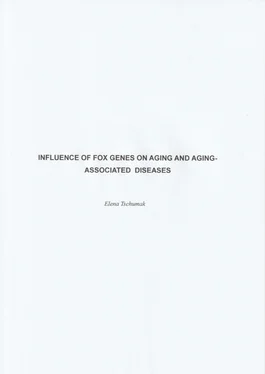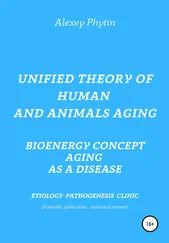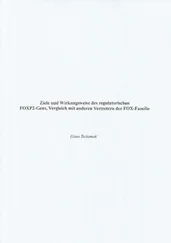An increased dopamine level leads to psychotic symptoms. The study by Mendoza et al. (2015), showed that FoxP-expressing neurons in Area-X also contain dopamine receptors 1A, 1B, and 2. Further studies may clarify whether the schizophrenic positive symptoms are due to the dopamine-FOXP2 interaction and how much FOXP 2 can influence dopamine dependent neurodegeneration in aging.
Regulation of FOXP2 and other FOXP genes by SUMOilization
Effect of sumoilization on the FOXP2 geneIn „The Key Regulator for Language and Speech Development, FOXP2, is a Novel Substrate for SUMOylation“ Meredith et al. (2016) reported that the FOXP2 is covalently modified on its amino acid residues by both SUMO1 and SUMO3 at phylogenetically conserved lysine 674. The acid residues downstream of the FOXP2 SUMOylation motif are required for full SUMOylation capacity and modulation of its downstream target genes (DISC1, SRPX2 and MiR200c). Sumoylation is a form of posttranslational modification. The SUMOs (small ubiquitin-like modifiers) is a class of regulatory proteins that control the activity of the target protein and its interaction with other proteins. But the modification does not alter the localization and stability of FOXP2. The modulation effect can be reduced by SENP2 (a specific SUMOylation protease). It has also been observed that the human R553H mutation of FOXP2 reduces its SUMOylating ability compared to wild-type FOXP2. Isui et al. (2017) showed in „Sumoylation of FOXP2 Regulated Motor Function and Vocal Communication Through Purkinje Cell“ with the help of in utero electroporation that the SUMOylation of FOXP2 has, among others, an effect on the development of Purkinje cells and plays an important role in motor skills and vocal communication. They identified FOXP2 SUMOylation in the cerebellum of new-born K673 mice with the help of in vivo and in vitro coimmunoprecipitation and concluded that PIAS3 (an E3 ligase of the small ubiquitin-like modifier) catalyses FOXP2 SUMOylation. This SUMOylation modifies the transcription regulation of FOXP2. Estruch et al. (2016) showed in „The language-related transcription factor FOXP2 is post-translationally modified with small ubiquitin-li modifiers“ that post-translational FOXP2 modification is accomplished by members of the PIAS family. These members of the PIAS family are E3 ligases that promote SUMO transfer from the SUMO-conjugating enzyme UBC9 to an acceptor lysine residue of the target protein. (Rytinki et al., 2009) The SUMO2 and the SUMO3 are 95% identical. However, SUMO1 is only to 50% identical to SUMO2 and SUMO3 (Meulmeester and Melchior, 2008). Estruch research group studied various DNA constructs. They used myc-labelled PIAS1 and the His, mCherry and the YFP-labelled SUMOs and the bioluminescence resonance energy transfer assays. For FOXP2 detection they used Western blotting with the anti-V5 antibody and the anti-beta actin as reference. They took UBC9 enzyme to measure the extent of FOXP2 SUMOylation. During the study of FOXP2-PIAS interaction the working group used the BRET assay and the luciferase assays with the Renilla luciferase (Luc). Further methods were the gel-shift assay, the pull-down assay, the yeast two-hybrid assay and the fluorescence microscopy of HEK293 cells. The study revealed that FOXP-2 could be modified by all three human SUMO proteins and that PIAS1 promotes this process. The docking site of SUMO proteins in the FOXP1 and FOXP4 appears to be the most conserved N-terminal region of FOXP2 away from the polyglutamine tract. This region also interacts with the autism-relevant transcription factor TBR1. (Parikshak et al., 2013)
Biochemical aspects of FOXP2 SUMOylationC-terminal carboxyl groups of SUMOS appear to interact with the amino group of FOXP2 via an isopeptide linkage. This amino group of the FOXP2 protein has a lysine side chain with the ΨKX (where Ψ is a hydrophobic amino acid and X is any other amino acid) consensus sequence . The SP-RING domain of the SUMO helps its FOXP2 recognition. N-terminal FOXP2 region contain some of the most important determinants of PIAS binding. These are K674 with PE motif and other residues, e.g. K285, K417 and K560 of the VE sequence. All of these residues are conserved in FOXP2. In this experiment a for SUMO conjugation required Arginine was removed and the SUMOLlyation did not happened. This showed that the K674 is the most important determinant for the SUMO1, SUMO2 and SUMO3 modifications. The mutants assay showed normal dimerization ability in the BRET, so the researchers concluded that the suppressed SUMOylation does not affect the FOXP2 ability to form homodimers or to interact with the CtBP129 co-repressor. This is because FOXP2 dimerization occurs with the help of the leucine zipper domain. However, the leucine zipper domain is not located near the SUMOylation site. This region includes domains that are highly conserved in FOXP1 and FOXP4. These domains serve as recognition sites for the autism-relevant transcription factor TBR1. This area is probably responsible for several protein-protein interactions. (Deriziotis et al., 2014) SUMOilization in FOXP1 / 4 genesThree SUMO proteomic studies of human cell lines identified FOXP1 and FOXP4 as substrates for SUMOilination. (Golebiowski et al., 2009; Tatham et al., 2011; Wen et al., 2014) FOXP1 and FOXP4 contain the SUMOylation relevant DNA motif that is identical to the corresponding FOXP2 motif of the surrounding PE sequence. In BRET study, FOXP1 also showed interactions with PIAS1, PIAS2, and PIAS4, but in contrast to FOXP2, FOXP1 showed little or no interaction with PIAS3. The FOXP1 also showed interactions with all three SUMOs. Probably FOXP1 is also Sumoylated by SUMO1, SUMO2 and SUMO3 at a location, like the K636 site of FOXP2. So, members of the PIAS family are act different in FOXP1 and FOXP2 SUMOylation.
Influence of FOXP2 SUMOlyatin on various diseasesIt is known that not only FOXP1 and FOXP4 transcription factor TBR1 and co-repressor CtBP1 interact with FOXP2. (Deriziotis et al., 2014; Li et al., 2004; Meulmeester and Melchior, 2008; Rytinki et al., 2009). So by speech and language disorders afflicted family showed a strongly reduced FOXP2 SUMOylation. SUMOylation appears to occur in thousands of nuclear proteins in all cell types at different stages of development (Meulmeester and Melchior, 2008; Gwizdek et al., 2013). According to Bacon and Rappold (2012) and Zhao et al. (2014) SUMO influences dendritic and synaptic morphogenesis by modifying neuronal proteins. Different PIASs may be involved in SUMOylation of various FOXPs and may affect the modification of neuronal circuits. In addition, they support the neuronal plasticity, but it is unclear whether a change in SUMOylation level during brain development leads to functional impairment. It has been demonstrated that PIAS1 knockout causes perinatal lethality in mice. (Loriol et al., 2012; Hasegawa et al., 2014) The study of Estruch et al. (2016) revealed that the four PIAS were continuously expressed but the PIAS1 and PIAS3 were expressed at the same extent in all tissues tested while the PIAS2 and PIAS4 were expressed primarily in testis. Studies of Turner et al. (2013), Adegbola et al. (2015), Nazaryan et al. (2014), Utine et al. (2014) and the fact that the FOXP2 plays a role in neuronal migration, neurite growth, in synaptic plasticity and in the language-related brain circuits (Garcia-Caleroet al., 2015; Tsui et al., 2013; Verne et al., 2011; Groszer et al., 2008) allowed another hypothesis about the cause of speech disorders in the KE family. All members of the by the speech disorder afflicted KE family had a heterozygous R553H mutation in the DNA-binding domain. In twenty other similar cases a missense mutation (R553H) in the FOX DNA binding domain that makes DNA binding and transcriptional repression by FOXP2 impossible was found. Nonsense and frameshift mutations, as well as chromosomal rearrangements were accompanied by similar disabilities. In contrast to the partially compensated interactions between the SUMOS and the K674R mutant the BRET assay showed an almost complete loss of the interactions between the SUMOS and R553H mutant compared to the wild type. The most important SUMOylation site stayed intact in the R553H mutants so the reduction of SUMOylation may base on reduced or absent interaction between the mutant and the PIASs or UBC9. In contrast to the K674R mutants which interact with PIAS but cannot be SUMOylated, the R553H mutants had reduced interaction with PIAS, which can be compensated by PIAS overexpression or by a fusion with UBC9. The R553H mutation also led to partial mislocalization and increased protein aggregation. The R553H mutation may lead to a conformational change that blocks the PIAS binding site. Alternatively, the loss of DNA binding capacity resulting from the R553H mutation and / or destabilization of the protein domain may trigger FOX interactions with other cellular proteins that interfere with PIAS binding. It seems to be useful to investigate the extent of the FOXP2 SUMOylation and the FOXP2-PIAS interactions in different issues and possibly further regulatory mechanisms of aging related neurodegeneration.
Читать дальше










![John Bruce - The Lettsomian Lectures on Diseases and Disorders of the Heart and Arteries in Middle and Advanced Life [1900-1901]](/books/749387/john-bruce-the-lettsomian-lectures-on-diseases-and-disorders-of-the-heart-and-arteries-in-middle-and-advanced-life-1900-1901-thumb.webp)

